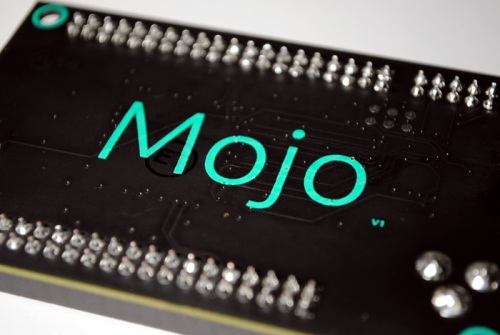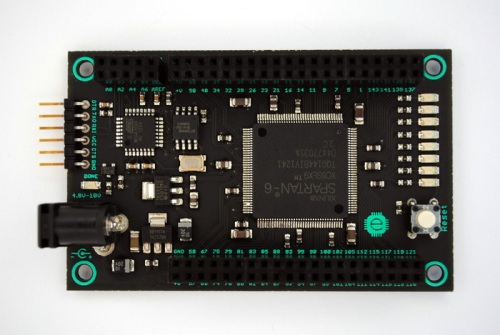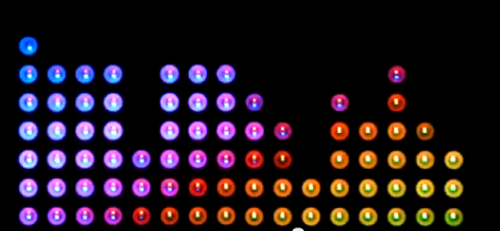Hobbyists and amateurs rejoice: Embedded Micro is releasing an already assembled FPGA development board for the common folk. No longer will you toil away like some 17th century peasant, holding your breath and sweating, as you attempt to correctly solder the FPGA without the proper tools. The Mojo, as the device is called, is a module that connects directly to a computer and allows the hobbyists to immediately begin designing digital circuits.

Why FPGAs matter: Until recently, the realm of digital circuit design was exclusive to large companies, requiring a substantial cash investment to produce an actual chip because of the reliance on expensive ASICs or Application Specific Integrated Circuits. The FPGA, short for Field Programmable Gate Arrays, is the affordable alternative.
FPGAs differ in that they are fully programmable logic devices and their function is determined at runtime – meaning the same device can be repurposed for each subsequent project thus enabling extended use after its original purpose.
FPGA vs. Microcontroller: Some jargon aside, FPGAs are commonly used for prototyping. Because of their flexibility and ability to easily reset, it’s sometimes more convenient to prototype a circuit on your FPGA board before mass producing that circuit using microcontrollers.
Unlike Microcontrollers, FPGAs are not limited by their predetermined peripherals, allowing the user to assign how many serial ports, and input or output pins, will be used in the actual circuit. Essentially, allowing you to design the hardware by designating the use of each pin, rather than the software that will be used with a processor as with Microcontroller.

All the inconvenient soldering has already been done.
Digital circuits: The digital circuits themselves are manually coded using Hardware Description Language, or HDLs, because there is no processor to run software at least until you’ve designed it. Essentially, everything is built from the ground up allowing complete control of the circuit.
The Mojo’s built-in features: The Mojo itself is equipped with 8×8 rows of RGB LEDs, a microphone, a light sensor, three buttons, and a serial connection for a GPS, all of which may be purposed to your liking. By default, the board is designed to function as a digital clock, which sets time using the GPS. The light sensor works in conjunction with the LEDs to dim the brightness according to the light in the room. However, these components can be programmed to perform whatever task you design given their scope. Synchronize music to create an audio visualizer? No problem, that’s what the microphone is for.

The module's exact specifications include the Spartan 6 XC6SLX9 FPGA with 9,152 logic cells, 84 general purpose IO pins, 8 analog inputs, a USB connection, on board voltage regulation measuring 4.5V to 12V input and 1.2V outputs, and a 50MHz on board clock.
How to get started: Embedded Micro’s online tutorials makes getting started simple that even an utter novice can follow. To make it as easy possible, the Mojo features built in on-board flash memory from which to load the configuration file housing your digital circuit, so as to not have to reconfigure this every time. With so much information available on the internet, even a complete novice can learn how to design digital circuits.
Visit Embedded Micro’s Kickstarter page for additional information.
Advertisement
Learn more about Electronic Products Magazine





